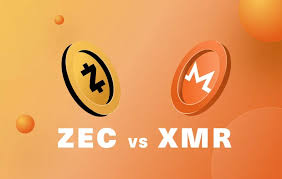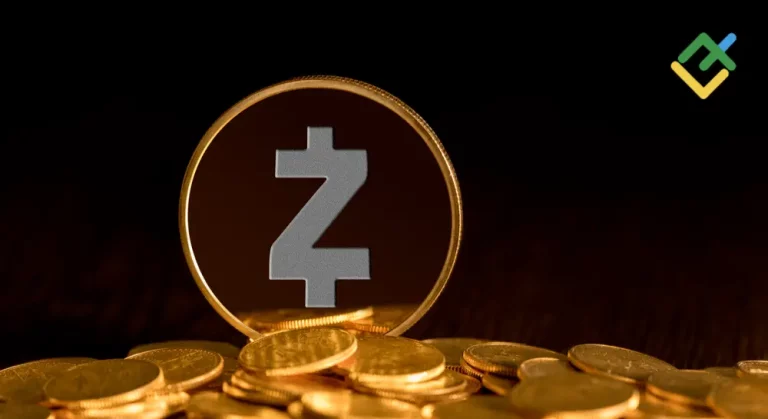How to Exchange ZEC to XMR
In the world of cryptocurrencies, privacy and security have become top priorities for many users. Two of the most well-known privacy coins are Zcash (ZEC) and Monero (XMR). Both of these cryptocurrencies offer advanced privacy features, but they differ in how they approach privacy and security. In this guide, we will explore how to exchange ZEC to XMR, understand the key differences between these two privacy coins, and provide a step-by-step guide for completing the exchange process.
Whether you’re interested in improving your privacy, diversifying your portfolio, or taking advantage of the unique features of Monero and Zcash, this guide will help you make the exchange smoothly and securely.
Understanding Zcash (ZEC)
Zcash (ZEC) is a privacy-focused cryptocurrency that was launched in 2016. It was developed to offer users more privacy and anonymity than Bitcoin and other public blockchains. Zcash achieves this through its innovative use of zero-knowledge proofs, known as zk-SNARKs. This technology allows transactions to be verified without revealing the sender, recipient, or transaction amount, providing a higher level of privacy compared to most cryptocurrencies.
However, Zcash also offers transparency options, meaning users can choose to send transactions either privately or publicly. Public transactions on Zcash work similarly to Bitcoin, while private transactions hide all transaction details. This flexibility makes Zcash a popular choice for users who want control over their privacy settings.
Some key features of Zcash include:
- Optional Privacy: Users can choose between public and private transactions.
- zk-SNARKs Technology: Ensures privacy and security without revealing transaction details.
- Secure and Decentralized: Like Bitcoin, Zcash is based on a decentralized blockchain, providing security and resistance to censorship.
Understanding Monero (XMR)
Monero (XMR) is another leading privacy-focused cryptocurrency that was launched in 2014. Unlike Zcash, Monero provides privacy by default for all transactions, meaning every transaction on the Monero blockchain is private and untraceable. Monero uses several technologies to ensure privacy, including ring signatures, stealth addresses, and ring confidential transactions (RingCT).
Monero is often praised for being one of the most private cryptocurrencies available, as it is nearly impossible to track transactions or identify users on the Monero network. This makes Monero a popular choice for users who want to keep their financial activities completely confidential.
Key features of Monero include:
- Default Privacy: Every Monero transaction is private by default, offering complete anonymity.
- Ring Signatures: Combine a user’s signature with others, making it impossible to trace the sender.
- Stealth Addresses: Generate a one-time address for each transaction to hide the recipient’s identity.
- RingCT: Obscures the amount of each transaction, ensuring that details remain private.
Why Exchange ZEC for XMR?
There are several reasons why you might want to exchange Zcash (ZEC) for Monero (XMR):
- Stronger Privacy Features: While Zcash offers optional privacy, Monero provides privacy by default for all transactions. If you’re seeking the highest level of anonymity, swapping ZEC for XMR might be a good choice.
- Diversification: Both Zcash and Monero are leading privacy coins, but they use different technologies and approaches to privacy. Diversifying your holdings by exchanging ZEC for XMR can help spread risk and take advantage of different strengths within the privacy coin space.
- Investment Strategy: Monero’s default privacy model and its growing adoption may offer potential for long-term value appreciation. If you believe Monero has more growth potential than Zcash, exchanging ZEC for XMR can be a strategic move.
- Use Cases: Some people prefer Monero for privacy-centric transactions due to its more anonymous nature. If you plan to use privacy coins for transactions where privacy is critical, Monero may be more suitable than Zcash.
How to Exchange ZEC to XMR: Step-by-Step Guide
Swapping Zcash for Monero is a relatively simple process, especially when using a reliable cryptocurrency exchange. Below is a detailed guide to help you make the exchange from ZEC to XMR.
Step 1: Choose a Cryptocurrency Exchange
To swap ZEC for XMR, you’ll need to use a cryptocurrency exchange. There are several types of exchanges available:
- Centralized Exchanges (CEX): These are managed by companies that act as intermediaries between buyers and sellers. Popular centralized exchanges that offer ZEC and XMR include Binance, Kraken, and KuCoin. Centralized exchanges typically have higher liquidity and a more user-friendly interface but may require account verification (KYC).
- Decentralized Exchanges (DEX): These exchanges allow peer-to-peer trading without the need for a central authority. DEX platforms like Uniswap and Bisq may not always support Monero due to its privacy features, but they offer greater privacy for trading other coins.
- Instant Swap Services: If you prefer a fast and easy exchange without creating an account, services like Changelly, Shapeshift, and SimpleSwap allow you to swap ZEC for XMR without registration.
Step 2: Set Up a Wallet
Before making the exchange, it’s essential to have a wallet that supports both ZEC and XMR. There are several options for cryptocurrency wallets:
- Software Wallets: These are digital wallets that can be installed on your computer or mobile device. Popular options for both Zcash and Monero include Exodus, Atomic Wallet, and Guarda Wallet.
- Hardware Wallets: For enhanced security, you can store your ZEC and XMR in a hardware wallet like Ledger Nano S or Trezor. These wallets store your private keys offline, making them less vulnerable to hacks.
Make sure you have your ZEC wallet address ready for sending Zcash and your XMR wallet address for receiving Monero.
Step 3: Register on the Exchange (If Required)
If you’re using a centralized exchange, you’ll need to create an account. This usually involves providing an email address, setting a password, and completing Know Your Customer (KYC) verification, which may require you to upload a government-issued ID.
If you’re using a decentralized exchange or an instant swap service, registration may not be necessary, allowing you to trade more anonymously.
Step 4: Deposit ZEC to the Exchange
Once your account is set up (if required), the next step is to deposit ZEC into your exchange wallet. On the platform, navigate to the Deposit section and select ZEC. The exchange will provide you with a wallet address to which you can send your ZEC from your personal wallet.
Make sure to double-check the wallet address before sending any funds to avoid any mistakes, as blockchain transactions cannot be reversed.
Step 5: Swap ZEC for XMR
After your ZEC has been deposited into your exchange wallet, navigate to the trading section and look for the ZEC/XMR trading pair. Enter the amount of ZEC you want to exchange for XMR. The exchange will display the current conversion rate and any applicable fees.
Review the details carefully before confirming the swap. The transaction usually takes a few minutes to process, depending on the platform and network congestion.
Step 6: Withdraw XMR to Your Wallet
Once the exchange is complete, you’ll receive XMR in your exchange wallet. It’s highly recommended to withdraw your XMR to your personal Monero wallet for added security. To do this, go to the Withdraw section, enter your XMR wallet address, and confirm the withdrawal.
Always double-check your wallet address to ensure that your funds are sent to the correct destination.
Best Practices for Swapping Cryptocurrencies
When exchanging ZEC to XMR, or any other cryptocurrencies, it’s important to follow best practices to ensure a smooth and secure process:
- Research Fees: Each exchange charges different fees for trades, deposits, and withdrawals. Be sure to check the fees beforehand to avoid surprises.
- Use Secure Wallets: Ensure your wallets are safe and secure. Enable two-factor authentication (2FA) if possible for extra security.
- Check Exchange Rates: Cryptocurrency prices are volatile, so check the current exchange rate before confirming your swap to make sure you’re getting a fair deal.
- Start with a Small Amount: If it’s your first time using a new platform or service, it’s wise to start with a small transaction to test the process before moving larger amounts.
Conclusion
Swapping ZEC to XMR is a straightforward process, and by following the steps outlined in this guide, you can make the exchange quickly and securely. Whether you’re looking to benefit from Monero’s strong privacy features or diversify your portfolio, exchanging ZEC for XMR can be a strategic decision. By choosing a reliable exchange, using secure wallets, and following best practices, you can confidently make the swap and take full advantage of the privacy features both Zcash and Monero offer.


